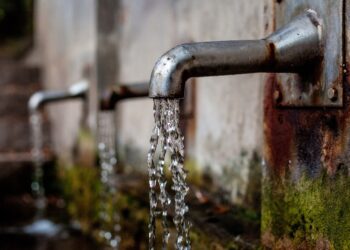Exposing drinking water to hydraulic fracturing fluid increases the risk of many adverse health outcomes. Unfortunately, knowing the risks posed by a particular well is very difficult due to the wide range of chemical ingredients used across sites. Now, researchers have created an app that changes this radically.

Hydraulic fracturing is a technique used to release the oil or gas held within naturally occurring pockets of shale or other dense rock deep within the earth. While it’s not a new technique, it saw a major increase in use since the early 2000s. Following this growth, reports started linking fracking with an increase in seismic activity.
But that’s not the only issue. Close proximity to hydraulic fracturing sites has been linked with increased hospitalization rates, increased risk of preterm birth, increases in congenital heart defects, and possibly neural tube defects among the public. These adverse health outcomes are likely due to the chemicals used in the fracking process, which affect processes involving development and reproduction.
Penn Medicine researchers have created an interactive tool, called WellExplorer, that allows community members and scientists to find out which toxins may be lurking in their drinking water as a result of fracking. You just have to type your ZIP code in the website or the app and look at the fracking sites near you, with information on the chemicals used at each of them.
In a recent study, the researchers behind the interactive tool found worrying data on some of the wells. For example, Illinois, Ohio, and Pennsylvania use a high number of ingredients targeting testosterone pathways. Meanwhile, Alabama uses a disproportionately high number of ingredients targeting estrogen pathways.
“The chemical mixtures used in fracking are known to regulate hormonal pathways, including testosterone and estrogen, and can therefore affect human development and reproduction,” Mary Regina Boland, one of the researchers behind the project, said in a statement. “Knowing about these chemicals is important, not only for researchers but also for individuals.”
The US already has a central registry for fracking chemical disclosures called FracFocus but the researchers believed it’s not user-friendly for the general public. It also doesn’t have information about the biological action of the fracking chemicals that it lists. That’s why they developed WellExplorer, starting by cleaning and shortening the data from FracFocus to use it in their own interactive tool.
The researchers integrated data from the Toxin and Toxin Target Database (T3DB) in order to obtain the toxic and biological properties of the ingredients found at the well sites. They also extracted toxicity rankings of the top 275 most toxic ingredients from the Agency for Toxic Substances and Disease Registry, as well as a list of ingredients that were food additives.
Boland explained that the use of chemicals at a fracking site may not necessarily mean that those chemicals would be present in the water supply, which would be dependent on other factors, such as the depth of the hydraulic fracturing. Nevertheless, she said WellExplorer was a very good starting point for residents that may be dealing with symptoms and want to have their water tested.






